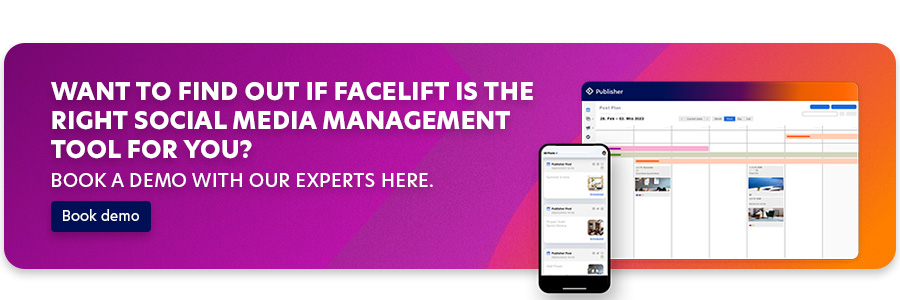One of the most important social media metrics, reach is one that should be seen as way more than just a number. Reach is the key to being heard, making connections and spreading messages. But how do you increase it? In this article, you'll learn how social media reach can change your game.
What is reach?
Definition of reach: Social media reach refers to the number of users who (can) see a particular post, ad, or piece of content. It is a metric that measures the visibility and distribution of content on social media. Reach can be both organic (through unpaid activity) and paid (through advertising or promotions).
Reach is an important metric for companies and brands to measure the success of their content and messages on social networks. It indicates how many people can potentially be reached with a particular message. Reach can be measured in a number of ways, including the number of impressions, views, clicks, or engagement with a post.
Understanding Reach vs. Impressions
Reach and impressions are two different metrics used to analyze social media activity. They measure different aspects of content visibility and differ as follows:
1. Reach
Reach refers to the number of unique user:ins or accounts that have seen or could potentially see a particular post, ad, or content. Each user is counted only once.
2. Impressions
Impressions refer to the total number of times a particular post or ad has been viewed. This means that each individual view of a piece of content is counted as a separate impression, regardless of which person or account saw the content.
For example: If a social media post is viewed by 100 unique users, the reach is 100, but if the post is viewed a total of 300 times (including multiple views by the same users), the number of impressions is 300. So reach is a measure of the number of different people. Impressions reflect the total number of views.
You can read a much more in-depth explanation of the top social media KPIs by checking out our white paper here.
Reach Calculation
Reach measurement on different social media platforms can differ in some ways, as each platform uses its own algorithms and metrics. In general, however, reach is calculated as follows:
- Organic reach refers to the visibility of your posts without paid advertising. Here's a simple formula for calculating organic reach:
Organic reach = number of unique users who saw the post
- Paid reach refers to the visibility of your posts through advertising or promotions. Calculating paid reach depends on the platform's analytics tools, but may include the following factors:
- Impressions: The total number of ad impressions or post views generated by advertising.
- Clicks: The number of clicks on the ad or promoted post.
- Engagement: The number of likes, comments, shares, or other interactions generated by the ad.
- Total Reach is the sum of organic and paid reach for a given post or campaign.
Total Reach = Organic Reach + Paid Reach
Increase your reach
Increasing your social media reach requires both creativity and strategy. Here are some tips for increasing your reach:
- Content is king: Post relevant, informative, and engaging content that piques the interest of your target audience. Pay attention to creativity and visual quality, especially with images and video.
- Audience Analysis: Know your audience so you can create content that speaks to their needs and interests. Use analytics and insights to determine demographic information and behavioral patterns of your target audience.
- Timing: A content calendar helps you maintain a consistent publishing schedule. Consider the best times and days to publish based on your audience's habits.
- Use hashtags: Use relevant hashtags to make your content more discoverable. Research which hashtags work best for your industry or niche.
- User-generated content: Include content created by your followers. This can increase engagement and encourage followers to create and share content related to your brand.
- Advertising: Invest in targeted advertising to increase your reach. Social media channels' advertising platforms offer extensive targeting options. Use promotions or contests to draw additional attention to your brand.
- Influencer Marketing: Consider partnering with influencers or other businesses to expand your reach. Influencers may already have an established and engaged following that can benefit from your content.
- Use stories and reels: Use short video formats as they are favored by the algorithm, which means more reach for you.

Take a critical look at reach as a KPI
It's important to note that reach is often thought of as a metric that measures the number of people who have seen or could potentially see your content. However, the quality of the reach - whether the people reached are part of your target audience and whether they responded to your content - is also important. Therefore, it makes sense to analyze reach in conjunction with other metrics such as engagement rate, conversions, and demographics to get a complete picture of social media performance.
Reach serves as a gateway to other important social media metrics and success factors. High reach means more people have seen the post. This increases the likelihood of engagement such as likes, comments, shares, and link clicks. These interactions are valuable because they reflect user engagement and can create a deeper connection between the brand and the target audience.
One of the main goals of many companies in social media is to increase brand awareness. High reach helps by exposing the brand to a wider audience. Even if users do not directly interact with a post, the visibility alone can lead to the brand being remembered. In the long run, this can lead to increased brand awareness, which in turn increases the likelihood that users will think of that brand when making future purchase decisions.
Conclusion: Reach as a KPI
Reach is undoubtedly an important KPI in social media, but it is much more than just a number. It is the first step in creating brand awareness, building engagement and driving interactions. It's important to pay attention to the quality of your reach as well as the quantity. By developing a balanced strategy that considers reach in conjunction with other KPIs, companies can realize the full potential of social media to achieve their goals. 






